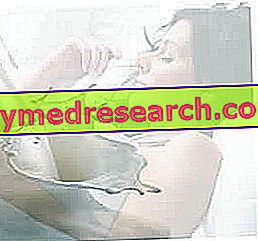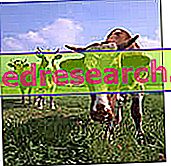Related articles: Cysticercosis
Definition
The cysticercosis is a parasitosis caused by the larval form (called cisticerco) of the cestode Taenia solium (flat and elongated parasitic worm).
Humans after consumption of raw or undercooked pork contaminated with larvae or adult worms of T. solium, can develop an intestinal infestation, called teniasis.
The ingestion of eggs excreted with human feces, on the other hand, can lead to the development of cysticercosis (it occurs, for example, following faecal food contamination). After the eggs have been ingested, they hatch into the intestine and release oncosphere (immature forms of the parasite, enclosed by an embryonic shell). The oncosphere then penetrate through the intestinal wall and travel into the bloodstream in the direction of muscles, subcutaneous tissues, eyes, brain, meninges, liver and other organs, where they are transformed into cysticercus (larval forms).
Most common symptoms and signs *
- Convulsions
- Seizures
- Depression
- Difficulty concentrating
- Brain edema
- Eosinophilia
- Hydrocephalus
- Intracranial hypertension
- Headache
- Meningitis
- Nausea
- Memory loss
- Drowsiness
- Confusional state
- Tremors
- Dizziness
- He retched
Further indications
Cysticercosis is generally asymptomatic or is confined to causing minimal tissue reaction in most organs. However, if the larvae invade the central nervous system, they can give rise to neurocysticercosis, characterized by focal or generalized convulsions, intracranial hypertension, hydrocephalus, alteration of the state of consciousness, aseptic meningitis and several other neurological signs. In the case of cerebral localization, the symptoms include headache, drowsiness, visual disturbances, vomiting, dizziness and tremors. These symptoms derive from the mass effect, ie the formation of cysts or solid nodules, and from the inflammatory reaction induced by cystic degeneration and the release of antigens.
T. solium eggs may be found on microscopic examination of faecal specimens. Neurocysticercosis can be recognized by CT or MRI.
The treatment is based on corticosteroids (prednisone or dexamethasone), anticonvulsants and, in some cases, antiparasitics (albendazole or praziquantel). Sometimes, surgical removal of the parasite may be indicated.



